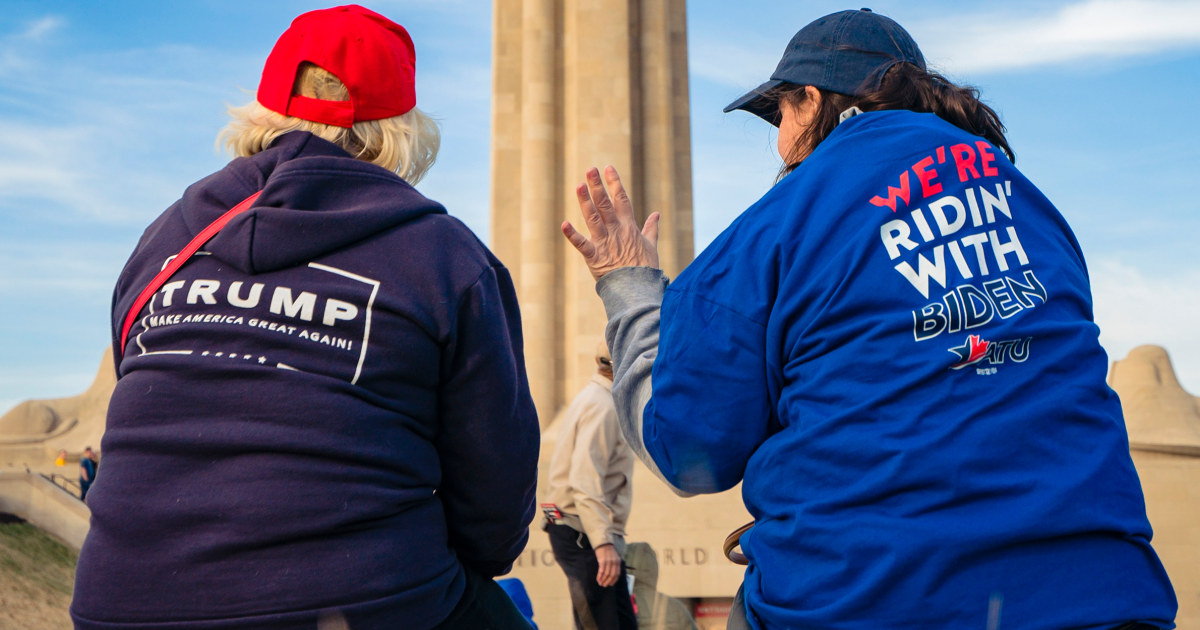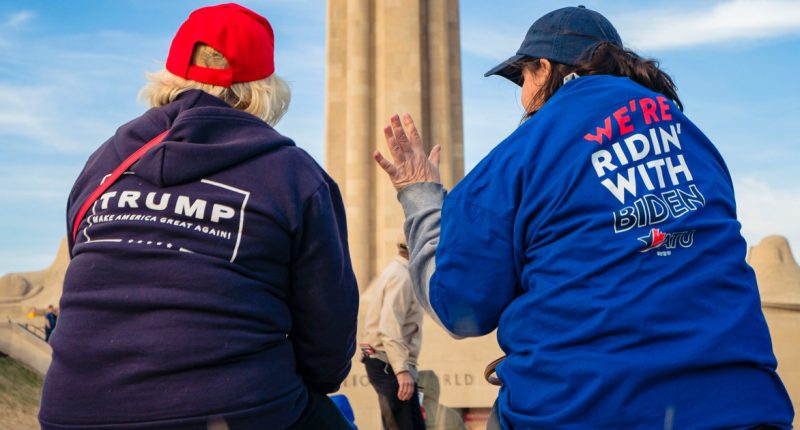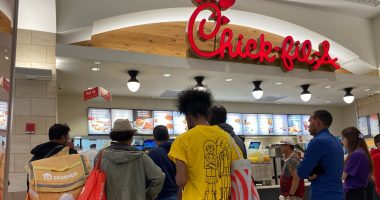
One of the more head-scratching facts about our current political climate is how much the two parties, whose purpose is winning voter support to gain power, aren’t listening to the voters, who have been screaming for massive change in our political system for just about this entire century.
In the most recent NBC News poll, a whopping 76% of voters said they “do not feel confident” that life for our children’s generation will be better than it has been for us. Up until the turn of the century, assuming the next generation would have it better and easier was a given in America. In many ways, this core belief — that our children will be better off than us — is the foundation of what many describe as “the American dream.”
But starting in the mid-2000s, around the time the Iraq War was going south both in public opinion and in actual events on the ground, the public turned dramatically pessimistic about the country’s future. And it hasn’t really budged since.
Yes, there was a brief period of optimism in the few months before and after the country elected Barack Obama, the country’s first Black president. But that optimism faded pretty quickly in the face of some harsh economic times.
I’ve used different descriptions over the years to describe this state of American politics. We had been calling it a “political recession,” but now it’s a full-on “political depression.”
And while this “political depression” is felt across most voting groups, it’s worth zooming in on younger voters, because their desire for change is quite strong — and, fascinatingly, they look more like “independents” in our most recent NBC News survey than they do like Democrats. If this trend continues, it will create a sea change in our politics. Since Obama’s 2008 election, success with voters under 40 has been a key ingredient to Democrats’ having good election nights.
The most recent NBC News poll included three different presidential ballot tests: Joe Biden vs. Donald Trump, of course, but also a generic Democrat against Trump and a generic Republican against Biden.
Just two of the most consequential demographic groups we track voted for the “change” candidate over the incumbent — or quasi-incumbent — in each instance: self-identified political independents (no surprise) and those ages 18-34 (big surprise).
That is, independents and younger voters preferred a generic Democrat over Trump, they preferred a generic Republican over Biden, and, most consequentially, they preferred the former incumbent in Trump over the current president in Biden, though the spread was within the margin of error.
No other demographic group had a pattern like that. What should you take away from this? First, young voters aren’t connected to the two major parties like other voters. This has been an ongoing pattern, as Gen Zers identify as “independent” at a higher rate than millennials, the previous generation of young voters.
Second, there’s a lot of skepticism that either of the two parties is looking out for their best interests. And third, there’s a stronger desire for change than for status quo. And that might be the most important way to look at what a Biden-vs.-Trump rematch risks.
Sadly, I’ve recently lost a loved one to cancer. One thing facing death does for someone is that it creates a different concept of risk. Many cancer patients become less risk-averse regarding experimental drug trials or treatments for one simple reason: They want to live! They know the status quo leads to eventual death, so they are willing to try anything to change that trajectory, even if the chances of success are 1%. Because, well, 1% is still better odds than 0.
I’m not trying to rewrite the “Flight 93” essay — far from it. But what I’m trying to do is explain why we are seeing the results we are seeing in these 2024 polls and explain what this electorate is feeling.
The last few months have given me the opportunity to get out from behind the anchor desk and spend time around the country. I’ve spent quite a bit of time on various college campuses — both in their journalism schools and in their football facilities! The pessimism of today’s youth is palpable. And why shouldn’t it be?
When I was coming of age, in the late ’80s/early ’90s, America and “democracy” were on an upswing. The Berlin Wall fell, and a whole bunch of new countries popped up and were trying their hand at democracy. This thing called the “internet” was just beginning, especially on college campuses. I vividly remember being impressed that I could use a computer at George Washington University’s library to check whether a book I needed was available from another area university without having to drive around Washington, going from library to library. It was a small thing, but it foreshadowed what was to come as we connected everyone and everything.
Altogether, it was a moment of optimism, when the arc of history felt like it was bending in America’s direction or certainly in the West’s direction. One could say the same thing about the 1960s and the baby boomers. Yes, the ’60s were tumultuous, but for those coming of age, the tumult was leading to good change, especially in voting rights, civil rights and women’s rights. Again, it felt like the arc of history was bending toward a more perfect union.
But all that changed in the 21st century, rather dramatically, thanks to 9/11. If there ever was an obvious line of demarcation from optimism about America’s place in the world to pessimism, it is Sept. 11.
Zoom out further and ask yourself whether either millennials, who came of age in the wake of 9/11 and later the Great Recession, or Gen Z, who are coming of age during the Trump era, can truly see and believe that the arc of history is bending in a positive direction. The last 20 years haven’t been good ones for the country. There have been good moments, but the period itself has been dismal.
This brings me back to the two political parties and how they are collectively tuning out the primal scream for change. Each party only selectively hears this call for upending the status quo, and only in the areas where it wants the status quo upended. The Biden team and the Democratic leadership that is trying to snuff out any internal opposition are convinced that the threat of Trump, combined with residual anger over the Supreme Court’s overturning Roe v. Wade, will persuade younger voters and independents to stick with the blue team, no matter how disappointed they might be in Biden.
But these voters could easily channel their rage into voting out incumbents whenever they are given the chance, or they might give up and stop voting.
Bottom line: Trump can win. But don’t mistake a potential Trump win for some sort of success by Trump in gaining converts. Instead, a Trump win would mean a chunk of voters gave up on Biden and the Democratic Party as a vehicle for change. The only remote chance Biden has of running as a change candidate, the winning formula in this century, is if he can continue to make voters feel Trump is a worse alternative.
It’s a tough sell for Biden, in particular, because the basic compact he made with voters was that he would bring stability and end chaos. And while the current chaos and instability around the world and the country aren’t necessarily Biden’s fault, they are on his watch. That may be his biggest obstacle to re-election, regardless of who his opponent is.
Another sign of pessimism
For the first time in the NBC News poll’s history, a majority of respondents said someone in their household owns a gun.
For decades, gun regulation advocates have comforted themselves with the fact that while the country was awash in guns, a majority of Americans actually weren’t gun owners. The assumption was that politicians wouldn’t fear going up against the gun rights lobbies if they knew a majority of Americans weren’t gun owners.
We’ve been asking this question periodically for years, and it’s notable that it has been a steady growth toward gun ownership. It’s not hard to conclude Covid had something to do with this, as the figure grew from 46% of households with guns in our 2019 survey to 52% this year. Every single demographic group increased its share of gun ownership except one: those who hold post-graduate college degrees.
I’d like to spend some time with America’s newest gun owners and find out why. I’ve had plenty of anecdotal conversations about this, and the answers are quite rational: Seems like everyone else owns one; better safe than sorry; people seem more aggressive than ever.
But I have another worrying suspicion: that it’s about distrust of one another. As we grow further apart, as our politicians exploit differences to “otherize” anyone who opposes them politically, folks truly fear for their station. Perhaps they fear being singled out and targeted, whether for their religion, race, sexual orientation or occupation. Perhaps they believe some of the cable and social media ranters who have convinced them crime is rampant everywhere or that political forces who oppose them are actually amassing arsenals. Whatever the rationale someone has for buying a gun these days, it is easier and easier to understand, even if one doesn’t agree with the decision.
One sign that our society is simply not what we want it to be is when a majority of its citizens believe they can’t trust the community to protect them anymore — they can trust only themselves.
This isn’t a gun issue; this is a trust issue with our culture and society. More political leaders need to see this as that, regardless of their views on what kinds of guns should be allowed for purchase. So whether you’re a self-described Second Amendment supporter or a Second Amendment skeptic, this development should trouble you.
Sign of the times?
The NBC News political team put together a great analysis of the number of actual campaign events the presidential candidates have been holding this summer and fall. Here’s the headline: The two candidates who appear to be in the strongest positions for the Republican nomination are among the candidates holding the fewest in-person campaign events: Donald Trump and Nikki Haley.
A few years ago, this statistic would be seen as a sign of weakness for both candidates. The assumption would be that they weren’t doing the grunt work necessary to win in places like Iowa and New Hampshire, where we all assume voters need to see and touch the candidates before they vote for them.
Well, before the internet, it was easier to meet someone at a bar or a dance club if you were looking to date than it was to go online to do it. Now, those of dating age prefer to be able to their own background checks (er, Google searches) before simply swapping phone numbers at bars.
Perhaps voters don’t need to see the candidates as often in person if they’re seeing the candidates constantly in other places, especially post-Covid — think social media, cable TV or debate stages. And while Ron DeSantis and Tim Scott may have been doing more than Haley and Trump on the campaign trail in Iowa, both were hesitant about having larger profiles on TV or social media.
Perhaps the distinction between “in person” and “online” when it comes to day-to-day campaigning in the early states is meaningless — except for reporters and strategists of a certain age who remember Jimmy Carter and John McCain “early stating” their way to presidential nominations.
Source: | This article originally belongs to Nbcnews.com










